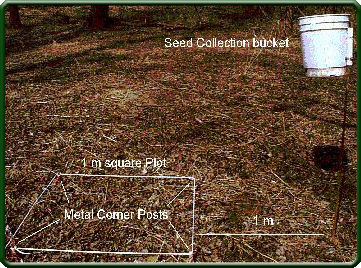- Home
- About S&T
- Taxa/Organisms
- Ecosystems
- Issues
- Methods & Tools
- Reports & Publications
- Location
- Search
1999 | Publisher: USGS | Science Center: Fort Collins Science Center (FORT, Ft. Collins) | Format: URL
www.fort.usgs.gov — A quasi-experimental situation exists in Rocky Mountain National Park, where elk (Cervus elaphus) populations have increased 3-fold since 1968 following their release from artificial controls within the park. Increases in elk habitat use and decreases in deer habitat use were observed. Significant increases in cover of mosses and lichens occurred More...

Publisher: USGS | Science Center: Forest and Rangeland Ecosystem Science Center (FRESC, Corvallis) | Format: URL
fresc.usgs.gov — Periodic fire is a natural part of sagebrush steppe ecosystems in the Great Basin. However, a suite of human-caused factors has dramatically changed fire regimes in many of these systems. Decades of fire suppression and livestock grazing have produced dense, single-aged sagebrush stands and invasion by cheatgrass (Bromus tectorum) has increased More...

Publisher: USGS | Science Center: Western Fisheries Research Center (WFRC, Seattle) | Format: URL
wfrc.usgs.gov — The objective of this research is to determine if symbiotic fungi are responsible for the invasiveness of plants in non-native habitats. One of the least studied but critical aspects of plant community structure and dynamics involves symbiotic interactions with endophytic and mycorrhizal fungi. In the last several decades it has become apparent More...

Publisher: USGS | Format: URL
www.soilcrust.org — The Biological Soil Crusts website studies the community of organisms that live at the surface of desert soils. Components include cyanobacteria, green algae, microfungi, mosses, liverworts, and lichens. The website discusses structure and formation of crusts, species composition, ecological functions (soil stability, water infiltration, effects More...

Publisher: USGS | Science Center: Western Fisheries Research Center (WFRC, Seattle) | Format: URL
wfrc.usgs.gov — The whole study, conducted at Fort Benning, Georgia, partially funded through the US Army, involves testing of water and soil quality, physical and biotic indicators of stress at both the population and community level. Anthropogenic stress in the present study comes from disturbance by vehicles, particularly tanks used in army training, and from More...

Publisher: USGS | Science Center: Upper Midwest Environmental Sciences Center (UMESC, LaCrosse) | Format: URL
www.umesc.usgs.gov — Aquatic vegetation flourished in the 1930s immediately after the locks and dams were constructed to accommodate barge traffic on the Upper Mississippi River System (UMRS). The distribution of aquatic vegetation, however, has fluctuated drastically in the 1980s and 1990s. As the navigation system ages, the fate of this important ecosystem component More...

Publisher: USGS | Science Center: Upper Midwest Environmental Sciences Center (UMESC, LaCrosse) | Format: URL
www.umesc.usgs.gov — After two centuries of rapid development, the floodplain in the Upper Mississippi River System (UMRS) retains 155,000 ha of forest. Most of the existing stands are less than 70 years old. Heavy seeded species, such as oaks and hickories, and pioneer species, such as willow and cottonwood, are not regenerating adequately to sustain their More...

Publisher: USGS | Science Center: Western Ecological Research Center (WERC, Sacramento) | Format: URL
www.werc.usgs.gov — This issue overview describes Perennial pepperweed (Lepidium latifolium L.), also known as tall whitetop, as an invasive weed that is found throughout California and in all of the western United States and its effects on wildlife refuges. Native to portions of Europe and southwestern Asia, pepperweed was accidentally introduced into the United More...

Publisher: Invasive Species Information Node | Format: URL
invasivespecies.nbii.gov — This research project website stresses the importance of developing early detection methods to prevent the spread of non-native species. Land managers currently control the spread of invasive non-native plant species after they have already become established instead of trying to prevent the establishment of the species. Lists of probable invasive More...
Publisher: California Information Node | Format: URL
cain.nbii.gov — The California Information Node provides access to data and information about California's environment. Among the topics covered are: invasive species, resource management, conservation, restoration, plants, animals, watersheds and policies. Images, maps and spatial data are also provided. Links to biological issues, biological disciplines, More...

Publisher: USGS | Science Center: Upper Midwest Environmental Sciences Center (UMESC, LaCrosse) | Format: URL
www.umesc.usgs.gov — This web resource provides decision makers with the information needed to maintain the Upper Mississippi River System as a viable multiple-use large river ecosystem. This resource also includes Data and sampling information, publication links, reports, other related documents and statistics, as well as links to field stations and other projects More...

Publisher: USGS | Science Center: Western Ecological Research Center (WERC, Sacramento) | Format: URL
www.werc.usgs.gov — Invasion and subsequent restructuring of ecosystems by nonnative organisms is taking on increasingly urgent significance as an example of human-caused environmental change with potentially dramatic consequences. This web resource discusses the affects of vascular plants - particularly in Sequoia, Kings Canyon, and Yosemite National Parks - on the More...
